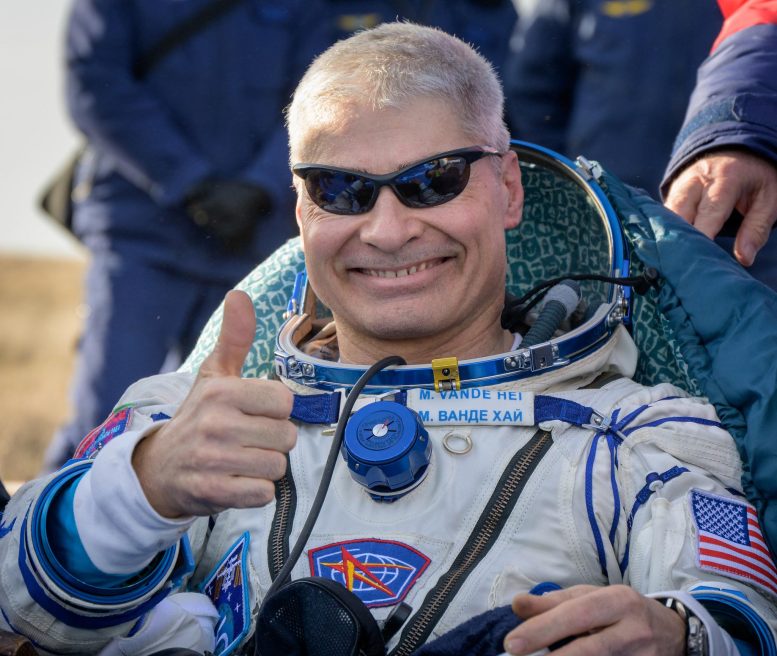
NASA astronaut Mark Vande Hei is seen outside the Soyuz MS-19 spacecraft after he landed with Russian cosmonauts Anton Shkaplerov and Pyotr Dubrov in a remote area near the town of Zhezkazgan, Kazakhstan on Wednesday, March 30, 2022. Vande Hei and Dubrov are returning to Earth after logging 355 days in space as members of Expeditions 64-66 aboard the International Space Station. For Vande Hei, his mission is the longest single spaceflight by a U.S. astronaut in history. Shkaplerov is returning after 176 days in space, serving as a Flight Engineer for Expedition 65 and commander of Expedition 66. Credit: NASA/Bill Ingalls
After extending the record for the longest single spaceflight in history by an American to 355 days, NASA astronaut Mark Vande Hei returned to Earth on Wednesday, March 30, 2022, along with Roscosmos cosmonauts Anton Shkaplerov and Pyotr Dubrov.
The trio departed the International Space Station at 3:21 a.m. EDT and made a safe, parachute-assisted landing at 7:28 a.m. (5:28 p.m. Kazakhstan time) southeast of the remote town of Dzhezkazgan, Kazakhstan.
“Mark’s mission is not only record-breaking, but also paving the way for future human explorers on the Moon, Mars, and beyond,” said NASA Administrator Bill Nelson. “Our astronauts make incredible sacrifices in the name of science, exploration, and cutting-edge technology development, not least among them time away from loved ones. NASA and the nation are proud to welcome Mark home and grateful for his incredible contributions throughout his year-long stay on the International Space Station.”
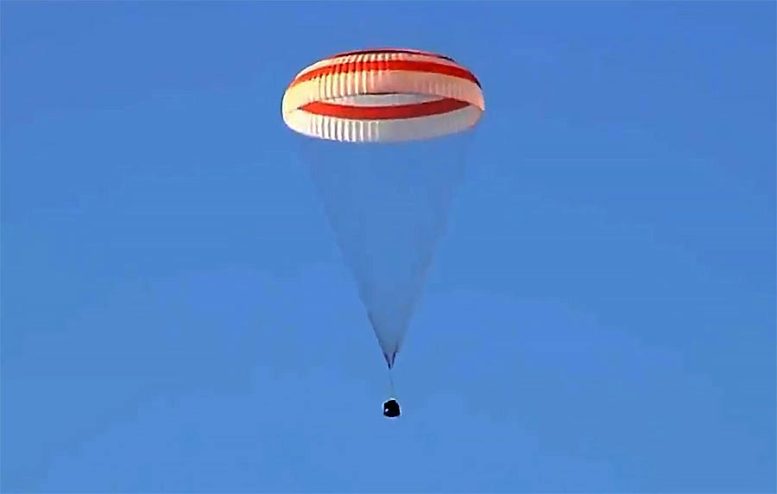
The Soyuz MS-19 crew ship carrying NASA astronaut Mark Vande Hei and two cosmonauts is pictured moments before landing under the clear, blue skies of Kazakhstan. Credit: NASA
Vande Hei’s extended mission will provide researchers the opportunity to observe the effects of long-duration spaceflight on humans as the agency plans to return to the Moon under the Artemis program and prepare for the exploration of Mars.
Vande Hei launched on April 9, 2021, alongside Russian cosmonauts Oleg Novitskiy and Pyotr Dubrov. His second journey into space of 355 days is the longest single spaceflight by a U.S. astronaut, previously held at 340 days, and gives him a lifetime total of 523 days in space. Dubrov also remained on board for 355 days on his first spaceflight.
Supporting NASA’s goals for future human landings on the Moon, Vande Hei completed approximately 5,680 orbits of the Earth and a journey of more than 150 million miles, roughly the equivalent of 312 trips to the Moon and back. He witnessed the arrival of 15 visiting spacecraft and new modules, and the departure of 14 visiting spacecraft.
Following post-landing medical checks, the crew will return to the recovery staging city in Karaganda, Kazakhstan, aboard Russian helicopters. Vande Hei will board a NASA plane bound for Cologne, Germany, for refueling prior to his return home. Shkaplerov and Dubrov will board a Gagarin Cosmonaut Training Center aircraft to return to their home in Star City, Russia.
During his record mission, Vande Hei spent many hours on scientific activities aboard the space station, conducting everything from plant research to physical sciences studies.
With the undocking of the Soyuz MS-19 spacecraft with Vande Hei, Shkaplerov, and Dubrov aboard, Expedition 67 officially began aboard the station. NASA astronaut Tom Marshburn recently took over as station commander, and is joined by NASA astronauts Raja Chari and Kayla Barron, ESA (European Space Agency) astronaut Matthias Maurer, and Roscosmos cosmonauts Oleg Artemyev, Denis Matveev, and Sergey Korsakov.
Marshburn, Chari, Barron and Maurer will remain onboard until late April, when NASA astronauts Kjell Lindgren, Bob Hines, and Jessica Watkins, as well as ESA astronaut Samantha Cristoforetti launch to the station as part of NASA’s SpaceX Crew-4 mission.


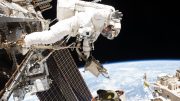

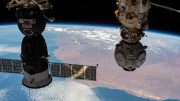
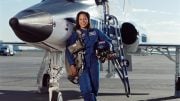
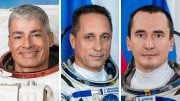
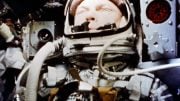
Humanity is going backwards, not forward…..you idiots were on the moon in 1969, what makes you think anything good will come from these endevours? I mean, you people will have to find a new planet just like earth that you can travel to once all of the natural resources are gone…..that ain’t going to happen……….people are too busy with pettiness and small minded ways. Good Luck @ssholes…..
LMAO the guy looks like an alien. I guess that’s what living in zero-g will do to you.
Glad he made it back safely though, people like that are pioneers of humanity.
To me, he looks like the human Buzz Lightyear.
You have that correct, despite the profanities. No substitute for living in a constant Gravitational Field. No amount of treadmill “quality time” or “centrifugal gravitation” will substitute the Physics and Physiology of EARTHBOUND existence.
VALERI POLYAKOV spent 437 days 17 hours circling the Earth. His flight ended in 1995, whereupon he promptly retired and disappeared from the public eye. He paid the price(s) (to name a few): Rubber-bone syndrome; middle ear calcification; permanent visual impairment… LOL he “did it” until he needed glasses. He spent more than a year developing sufficient bone mass and muscle tone to walk without “breaking a leg”. Last check in 1996 he was still walking with 2 canes and “bumping into things.” [natykayas’ na veshchi.]
There is a reason that Vande Hei is wearing sunglasses and sitting in a wheelchair… after a “mere” 355 days.
Meanwhile… Back on Earth, the Space Monkeys sew their wet dream into the common consciousness… while the one (and only) KNOWN Space and Place conducive to HUMAN habitation slides into the Trash Bin. The proposed Mars Mission (a distant “reality”) will require 400+ days, consume materials and energies equivalent to building a small city… to deliver 3 Humans to the surface of Mars. To do WHAT? OH… Yeah: drag themselves around for a couple of YEARS while they learn how to WALK again and master sign language.
The entire endeavor has more to do with spending money than spending it wisely.
SPARE ME the BS. And spare the Earth.
CUT TO: The ever-popular, HOORAH SCI-FI Fantasy: “THE EXPANSE”…
A “tres moderne” (vaguely phallic) spacecraft zooms-off, headed into the Far Reaches of THE VOID in a burst of ear-shattering ROCKET-FUELED POWER…
Uh… THERE IS NO SOUND IN SPACE. It’s a VACUUM. Duh.
Yep. No one can hear you scream: WTF am I doing here?
APPARENTLY, some would import this silence to Earth.
HORRORSHOW, a true HORROR SHOW.
Sincerely,
HAL
Thank you Russia for bringing these men back to earth.
Its amazing someone commented rediculus bad sorry bro we have to think forward my schelute to astronauts from Pakistan
These “astronauts” are literally, only a few hundred miles from earth while in the International Space Station Why is that never mentioned? We went to the moon in the 60’s and now we camp a few hundred miles away and call that progress? We have never been to the moon. This is all a waste of money.
So many words in the 7comments before mine, thank you Russia for honoring the home ride earth. 🤓👏👊moon has a piece of past n earth ,too. Mining moon for minerals has a real solution, no insults !!!u need2know?why^*^development of future is based on present and past. Learn from all these moments. Yes there are other earth like planets even know location,,,,once again point a to point b requires movement. Duh!🍺!🍺!thank you🍺 Bubba 🍻J(emoli would help 😘)be thankful 🍕n pray🛐that the Fermi bubbles don’t 🔥🔥🔥🔥ingite.⏳🛸🪂🪐☃️🌊invite. Spring ,pray 🕊for those who dwelled above for 355 days in ISS. Free movies on YouTube. Eat healthy rest go swimming 🏊♂️ or float.explore discover n learn🌐🦧🦕🐛👽👾👽👾👽👾👽🤖👻